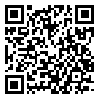Volume 13, Issue 37 (11-2022)
rap 2022, 13(37): 158-165 |
Back to browse issues page
Animal Sciences Research Department, Kermanshah Province Agriculture and Natural Resources Research and Education Center, Agricultural Research, Education and Extension Organization, Kermanshah, Iran
Abstract: (1470 Views)
Extended Abstract
Introduction and Objective: Among the country's horse breeds, the Arabian horse has the largest population. Arabian horses are very beautiful and resistant to harsh environmental conditions and are mostly bred in the southern regions of the country. Due to the large population of this breed in the country, it has given rise to several genera that may be genetically distinct. Knowing these differences is important in managing and conserving genetic resources. The aim of this study was to investigate the genetic diversity of Arabian horses and their different breeds in Iran.
Material and Methods: In the present study, the genetic diversity of nine Iranian Arabian horse breeds including Kahilan, Abyan, Hamdani, Saglavieh, Julfan, Khersan, Maliha, Nasmani and Vedeneh was investigated. The identification of the strais was based on the information in the studbook of the Arabian horse that has been published by the Equestrian Federation of Iran. All samples were genotyped using 12 microsatellite markers recommended by the international society of animal genetics (ISAG). Electrophoresis of amplified DNA fragments was performed by 3130 genetic analyzers. Data analysis was performed using GENALEX version 2.0 and NTSYS version 2.02 softwares.
Results: A total of 100 alleles were identified using this number of markers on 251 Arabian horses. ASB17 marker with an average of 7.22 alleles and HTG4 marker with an average of 4.77 alleles showed the highest and lowest number of alleles among all strains, respectively. The highest and lowest heterozygosity was observed in AHT4 marker with a mean of 0.786 and ASB23 marker with a mean of 0.631 allele in all studied strains. Also, the highest and lowest mean heterozygositys were calculated in AHT4 markers with 0.784 alleles and ASB2 with 0.598 alleles, respectively. The average Shannon index for all markers was 1.427. The principal component analysis test showed no specific grouping due to the demographic separation of different Arabian horse strains, and all horses were located in one area on the coordinate axis.
Conclusion: The results of the present study showed a better understanding of the genetic structure of different strains of Arabian horses. The results of this research can also help horse breeders to manage their genetic diversity and breeding. Because there is relatively large genetic diversity within different strains of Arabian horses, there is good potential for breeding programs to improve performance and prevent their extinction.
Introduction and Objective: Among the country's horse breeds, the Arabian horse has the largest population. Arabian horses are very beautiful and resistant to harsh environmental conditions and are mostly bred in the southern regions of the country. Due to the large population of this breed in the country, it has given rise to several genera that may be genetically distinct. Knowing these differences is important in managing and conserving genetic resources. The aim of this study was to investigate the genetic diversity of Arabian horses and their different breeds in Iran.
Material and Methods: In the present study, the genetic diversity of nine Iranian Arabian horse breeds including Kahilan, Abyan, Hamdani, Saglavieh, Julfan, Khersan, Maliha, Nasmani and Vedeneh was investigated. The identification of the strais was based on the information in the studbook of the Arabian horse that has been published by the Equestrian Federation of Iran. All samples were genotyped using 12 microsatellite markers recommended by the international society of animal genetics (ISAG). Electrophoresis of amplified DNA fragments was performed by 3130 genetic analyzers. Data analysis was performed using GENALEX version 2.0 and NTSYS version 2.02 softwares.
Results: A total of 100 alleles were identified using this number of markers on 251 Arabian horses. ASB17 marker with an average of 7.22 alleles and HTG4 marker with an average of 4.77 alleles showed the highest and lowest number of alleles among all strains, respectively. The highest and lowest heterozygosity was observed in AHT4 marker with a mean of 0.786 and ASB23 marker with a mean of 0.631 allele in all studied strains. Also, the highest and lowest mean heterozygositys were calculated in AHT4 markers with 0.784 alleles and ASB2 with 0.598 alleles, respectively. The average Shannon index for all markers was 1.427. The principal component analysis test showed no specific grouping due to the demographic separation of different Arabian horse strains, and all horses were located in one area on the coordinate axis.
Conclusion: The results of the present study showed a better understanding of the genetic structure of different strains of Arabian horses. The results of this research can also help horse breeders to manage their genetic diversity and breeding. Because there is relatively large genetic diversity within different strains of Arabian horses, there is good potential for breeding programs to improve performance and prevent their extinction.
Type of Study: Research |
Subject:
ژنتیک و اصلاح نژاد دام
Received: 2022/04/26 | Revised: 2022/11/19 | Accepted: 2022/06/8 | Published: 2022/11/19
Received: 2022/04/26 | Revised: 2022/11/19 | Accepted: 2022/06/8 | Published: 2022/11/19
| Rights and permissions | |
 |
This work is licensed under a Creative Commons Attribution-NonCommercial 4.0 International License. |




